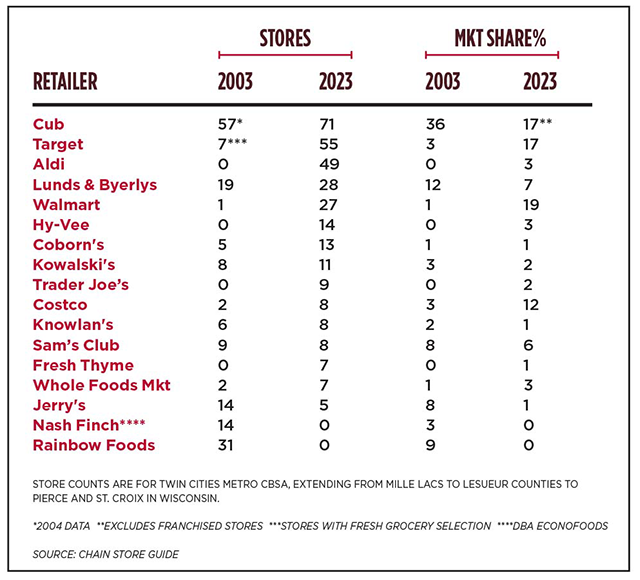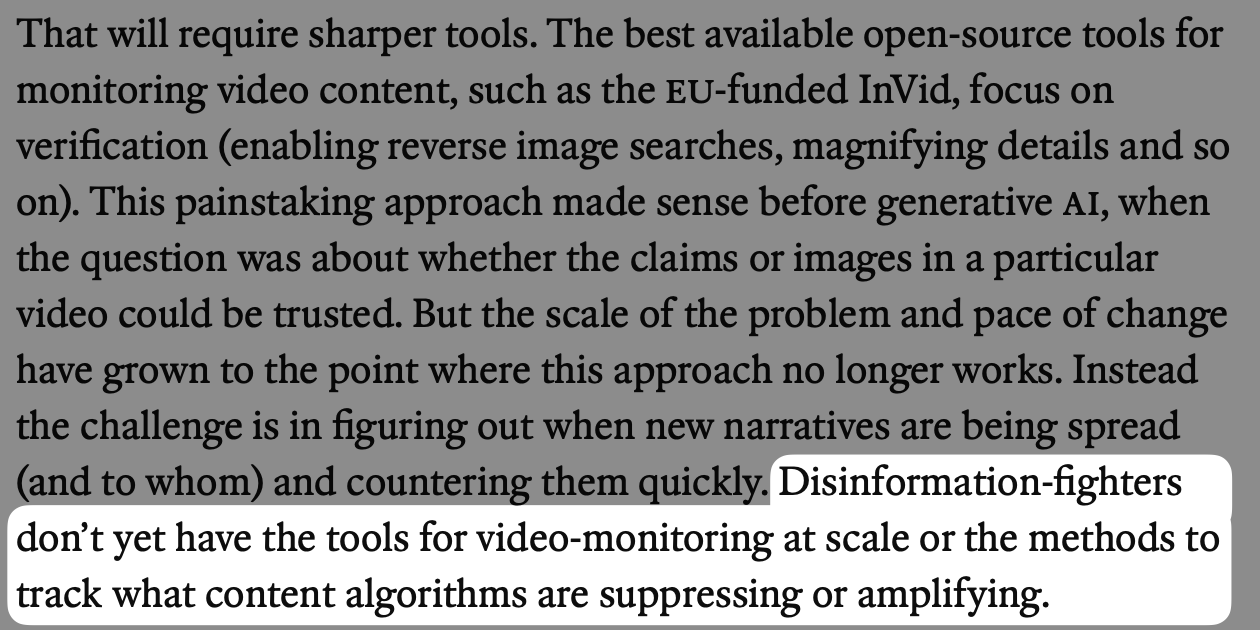Louie Mantia has been on a tear lately releasing (or re-releasing?) new icon packs, the latest of which reflects on the controller button styles of the Sony PlayStation.
Jim VandeHei (Axios co-founder) on The Grill Room podcast regarding new media vs the old:
“What I tell our staff is, I don’t have time to be romantic. Whatever was will not be in the future. You damn well better figure out what’s happening on the ground.
Honestly, at this point, good advice.
Westenberg’s How to Destroy a Generation:
When every feeling becomes a guiding star, resilience takes a back seat. Minor setbacks start to feel like existential crises, and any challenge to your perspective feels like a personal attack. Soon enough, you have a population that’s constantly on edge, unable to handle adversity, and primed to overreact to the smallest discomfort.
Sometimes new stories are just old stories badly remembered.
- Susanna Clarke, afterword: snow (from her book, The Wood at Midwinter)

China tightens control of rare earth minerals — what’s the plan here?
At least Steve Ballmer is trying to reinforce the “twin pillars” of democracy and capitalism through his continued investment in USAFacts.org. What good it does is up to news organizations and government, fortunately/unfortunately — prime example:
Ballmer has taken his just-the-facts pitch to Capitol Hill, trying to convince Congress to ground its legislation in facts and to sign a document saying it believes in government data. “I don’t feel like I got much traction,” he admitted.
How endemic will AI feeds and content become? Sounds like this is the plan for Meta, at any rate, according to Jason Koebler:
Both Facebook and Instagram are already going this way, with the rise of AI spam, AI influencers, and armies of people copy-pasting and clipping content from other social media networks to build their accounts.
Save us all, humans + RSS.
At this point, what industry hasn’t been upended by private equity.
An intriguing idea, as I for one am interested in seeing Submerged but am not buying a Vision Pro to do it:
Apple should sell tickets to go sit and experience these special Vision Pro events.
Green Day de-masters their landmark Dookie album into 15 inconvenient, throwback musical formats in a brilliant audio experiment. The big mouth Billie bass is neat, but the answering machine? Divine. (Via Kottke. )
Movie theater popcorn solved: refined coconut oil and Flavacol.
Butter has nothing to do with it.
I concur, Matan Budy, on buying things you use:
…I press the pay button with love. It makes me feel good that I upgrade my life, or that I support someone who is working really hard for something I care about.
One of those unexpected, sudden rising to fame stories that happens every so often in the literature wold: this time with Mick Herron’s Slow Horses series. I’ve only watched the Apple TV series so far (which is stellar and on its 4th season), but I’ve got my eye on the books next…
➔ Patrick Rhone has a nice “Rhoneism” today regarding clothes, and remarks specifically:
[...] fashion and the idea of having multiple items of various pieces of clothing is a fairly recent idea history-wise [...]
Nice to see an intersection of this thinking × capsule wardrobe trending, too.
Six Colors' Interview with Zach Gage on Puzzmo and specifically, Pile-up Poker. He’s got an agreeable rationale for why it’s limited to five hands per day, something I’d been curious about since it was launched.
Ingenuity in ’re-agriculture' has led to successfully transitioning out of factory farming into medicinal tinctures, mushroom coffee blends, and solar panel surplus energy. “If all goes well, the profits from mushrooms could exceed what the farm was generating from hogs during the best of times.”
Great new video from coffee guru James Hoffmann covering celebrity coffee products. Few have captured the egotistical rationale (me = “founder”) and business machinations (scaled but mid production) driving this celebrity trend than he does. It’s still all about merchandising recurring revenues.
Kudos to Matt Birchler’s simple declaration about the AeroPress making a phenomenal cup of coffee. I agree that regardless of how skilled you think you are with pour overs or other methods, the AeroPress delivers an impressively consistent cup without much room for error.
A list of some lists, from Field Notes. A quintessential kind of post for the notebook brand, really.
Is there any other state in the US with such a breadth of grocery store non-dominance as Minnesota? Great piece by Adam Platt at MinnPost on the state of affairs. Big Kowalski’s fan, even if it’s only 2% marketshare.

Ambitious collaboration of companies using “luminescent pigments [from FibreTrace’s tech] into raw cotton when ginning”, whereupon “scanning a pigment, it can be tracked throughout the supply chain, identified and verified on-site”. Love to see this supply chain innovation approach.
Kino was released today as a 1.0 — a powerful, fun new video recording app from Lux, the makers of the Halide photography app. Immediate download for me, foremost to just check out their neat intro-to-the-app brochure. Secondly, to record my dog, who just sat there on the couch blinking at me.
Another notch towards disinformation dystopia… Microsoft researchers warn us (as if we weren’t already concerned) about the dissemination of generative AI into video-based platforms. Honestly, video has always been a concerning format for news — it’s prone to visual biases. This doesn’t help.

Great piece from Bryan Hansel on unread books:
Unread books are a way to know that we don’t know. It’s being humble. I believe there’s a saying that’s something like this: the more you know, the less you know you know.
Aggregator Review Sites & Hints of Their Degradation
Ben Brooks has a well-appointed linked commentary up for a post by HouseFresh, detailing the bankrupt state of “genuine” product review sites. Ben (and I, for that matter), have been writing product reviews for objects of interest for over a decade, and I definitely can say that there are fewer reliable sources to cross-check and research these days.
I recommend the linked-to HouseFresh post, and then Ben’s remarks. All progressive thoughts on this space.
A few take-aways
- Trust erosion. Can anyone take Wirecutter seriously anymore, post-NYT acquisition? Does anyone trust other sites with heavy brand collaboration, like Carryology, where inherent bias must exist? Or any heavily ad-monetized aggregation site? Like the noted air purifier in HouseFresh’s post that imploded, how is it we can trust products that are recommended or have high customer reviews when the company is peddling a poor product and can’t even sustain itself?
- Broken visibility. There are concerns that actual review sites are surprisingly poorly ranked in search engines (though it’s unsure how large-language models will handle these — I’d hope they respect the good ones).
- Affiliate acquisition. Ben also notes that many “conglomerate type companies have bought out once reputable brands to sell utter shit content”, which is absolutely true. This is affiliate/aggregator site M&A planning 101.
- Review integrity. Review enshittification is certainly happening, and Ben summarizes likely what’s happening in many review industries: “a lot of people will review something after a day, without harming the item, so they can go ahead and return it from where it came and get their money back… they need the money back, it’s expensive, and they need a lot of content to publish on a frequent basis.”